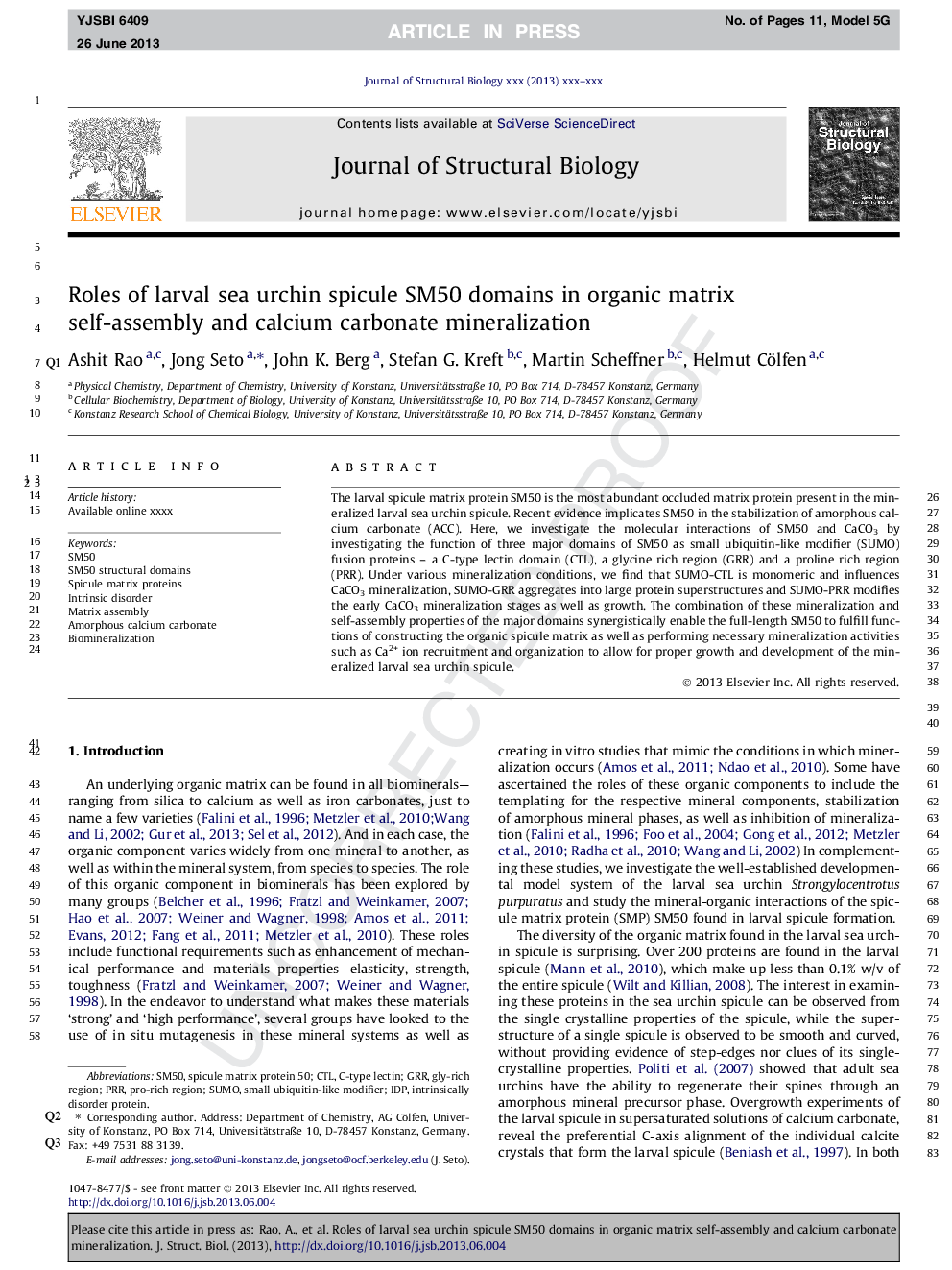| Article ID | Journal | Published Year | Pages | File Type |
|---|---|---|---|---|
| 5914295 | Journal of Structural Biology | 2013 | 11 Pages |
Abstract
The larval spicule matrix protein SM50 is the most abundant occluded matrix protein present in the mineralized larval sea urchin spicule. Recent evidence implicates SM50 in the stabilization of amorphous calcium carbonate (ACC). Here, we investigate the molecular interactions of SM50 and CaCO3 by investigating the function of three major domains of SM50 as small ubiquitin-like modifier (SUMO) fusion proteins - a C-type lectin domain (CTL), a glycine rich region (GRR) and a proline rich region (PRR). Under various mineralization conditions, we find that SUMO-CTL is monomeric and influences CaCO3 mineralization, SUMO-GRR aggregates into large protein superstructures and SUMO-PRR modifies the early CaCO3 mineralization stages as well as growth. The combination of these mineralization and self-assembly properties of the major domains synergistically enable the full-length SM50 to fulfill functions of constructing the organic spicule matrix as well as performing necessary mineralization activities such as Ca2+ ion recruitment and organization to allow for proper growth and development of the mineralized larval sea urchin spicule.
Keywords
Related Topics
Life Sciences
Biochemistry, Genetics and Molecular Biology
Molecular Biology
Authors
Ashit Rao, Jong Seto, John K. Berg, Stefan G. Kreft, Martin Scheffner, Helmut Cölfen,
